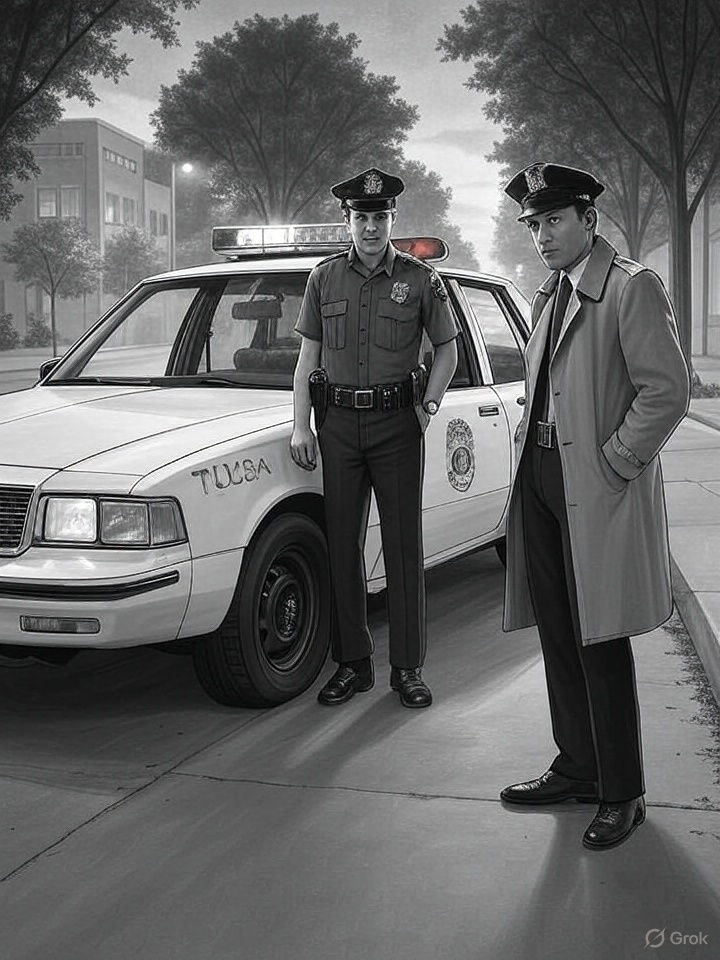True Crime Chronicles: Tulsa sexual assaults from 1989 will keep the rapist in prison until at least 2047
- Dennis McCaslin

- 2 minutes ago
- 3 min read



Between June and August of 1989, fear gripped the University of Tulsa and surrounding neighborhoods. Women were stalked, homes invaded, and lives shattered. The man behind the assaults--Bernard Crawford--would become the focus of one of Tulsa’s most intense manhunts.
The summer of 1989 brought a wave of terror to Tulsa’s midtown neighborhoods. The assaults followed a chillingly consistent pattern. Victims were often alone in their homes or apartments when the attacker struck, typically late at night or in the early morning hours. He gained entry through unlocked doors or windows, and in several cases, he brandished a knife to threaten and control his victims.
The calculated nature of the attacks suggested a predator who knew the area well and had studied his targets.
As the number of victims grew, so did the urgency among law enforcement. The media dubbed the unknown assailant the “TU Rapist,” and the community braced for the next attack.

In response to the escalating crisis, Tulsa police assembled a specialized 14-member task force dedicated solely to capturing the perpetrator. Patrols intensified around the University of Tulsa campus, and flyers were distributed urging residents to secure their homes. The atmosphere in the city was tense and fearful.
On August 23, 1989, the manhunt came to a dramatic end. Bernard Crawford, a 35-year-old man with a long criminal history, was arrested after being spotted by undercover officers crawling out of a window at the scene of his final assault.
He fled to his truck, but officers quickly apprehended him. Inside the vehicle, they discovered a roll of $20 bills reported stolen by the victim, a firearm, and a pair of yellow surgical gloves that matched the victim’s description.
Born on April 1, 1954, Bernard Crawford stood six feet tall and weighed 156 pounds at the time of his arrest. He lived just six blocks from the University of Tulsa, placing him squarely within the geographic radius of the attacks.
Crawford was no stranger to law enforcement. His criminal record stretched back nearly a decade and included convictions for burglary, grand larceny, and rape.

During his trial, Crawford claimed he had been driving around to charge his truck battery and denied any involvement in the assaults. However, multiple officers testified that Crawford had confessed to the rape after waiving his Miranda rights.
His defense team argued that the confession was coerced and that he had been denied legal counsel, but the court found these claims unconvincing. His conviction was later upheld on appeal.
Crawford’s legal journey was long and complex. His first trial in July 1981 ended in a mistrial, but a second trial in November of that year resulted in his conviction for the rape of a 17-year-old girl. The jury recommended a 20-year sentence. Additional charges followed, including two more counts of first-degree rape and six other felonies. These convictions ultimately led to a combined sentence of 115 years.
Over the years, Crawford accumulated a staggering list of convictions across multiple courts:
In 1981, he was convicted of first-degree rape and sentenced to 20 years.
In 1982, he received a 115-year sentence for another rape conviction, along with 20 years for burglary.
In 1984, he was convicted of sodomy, grand larceny, and multiple counts of burglary and rape, each carrying 20-year sentences.
In 1997, while already incarcerated, he was convicted of escape from confinement and smuggling contraband into jail.
While the exact number of rapes attributed to him as the “TU Rapist” was never publicly finalized, investigators linked him to multiple assaults based on forensic evidence, victim testimony, and his confession. The scope of his crimes was significant enough to warrant over 200 years in combined sentencing, including convictions for rape, sodomy, burglary, and escape from confinement.

He will remain incarcerated until at least 2047 according to Oklahoma Department of Corrections records.
The case of Bernard Crawford left a deep imprint on Tulsa. Law enforcement agencies improved their coordination in handling serial crimes, and the University of Tulsa implemented stronger campus security measures.
The public outcry and media attention also helped galvanize victims’ rights advocacy across Oklahoma.
Perhaps most significantly, the case underscored the limitations of forensic science at the time. The delays in lab testing and inconclusive results in several cases highlighted the need for better technology and faster processing--needs that would eventually lead to major investments in DNA analysis nationwide.
While Bernard Crawford’s name became infamous, the true legacy of this case belongs to the survivors--women who endured unimaginable trauma and stood strong in court to ensure justice.
Their courage reshaped how Tulsa responded to sexual violence and inspired reforms that continue to protect others today.



